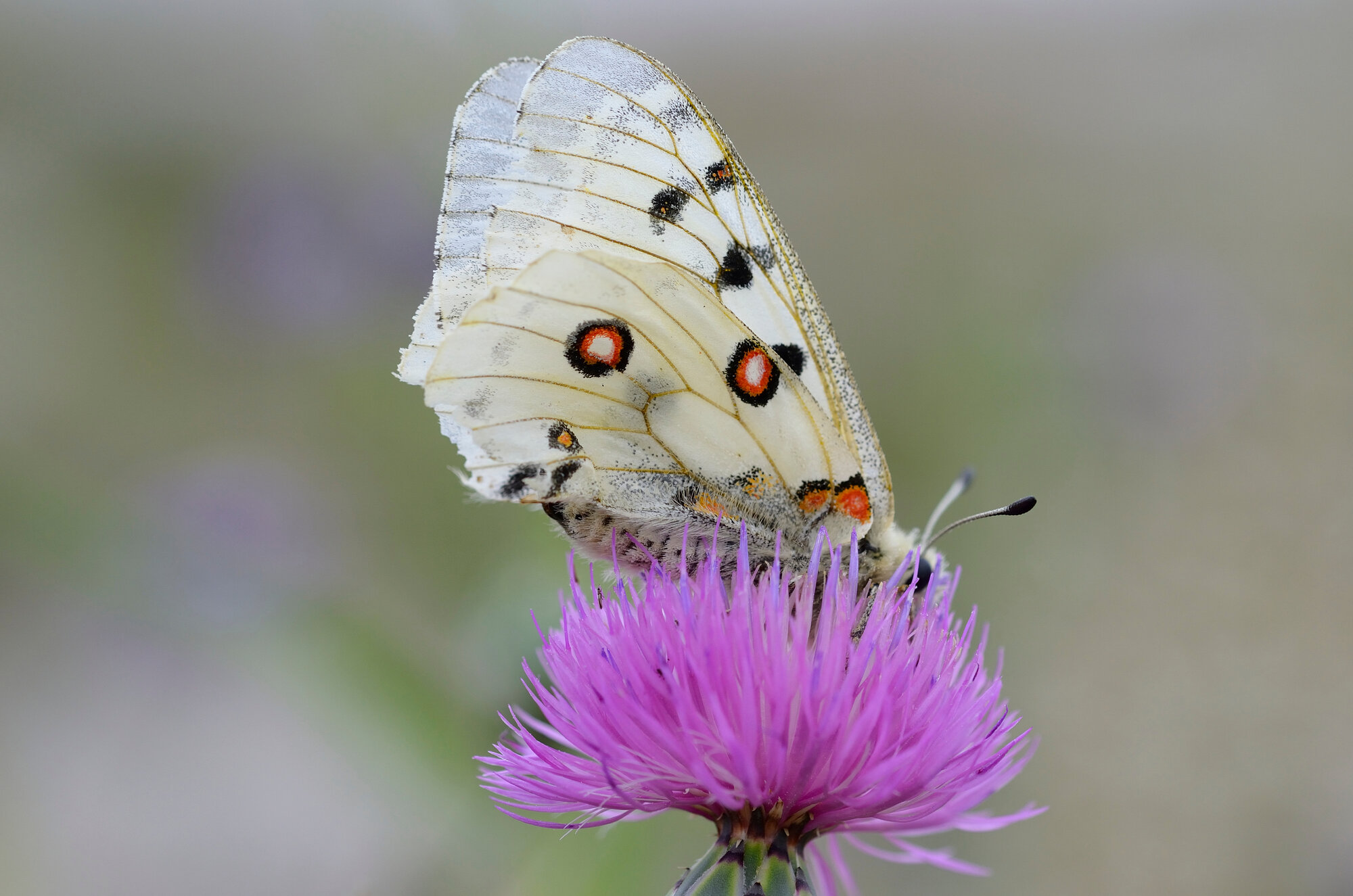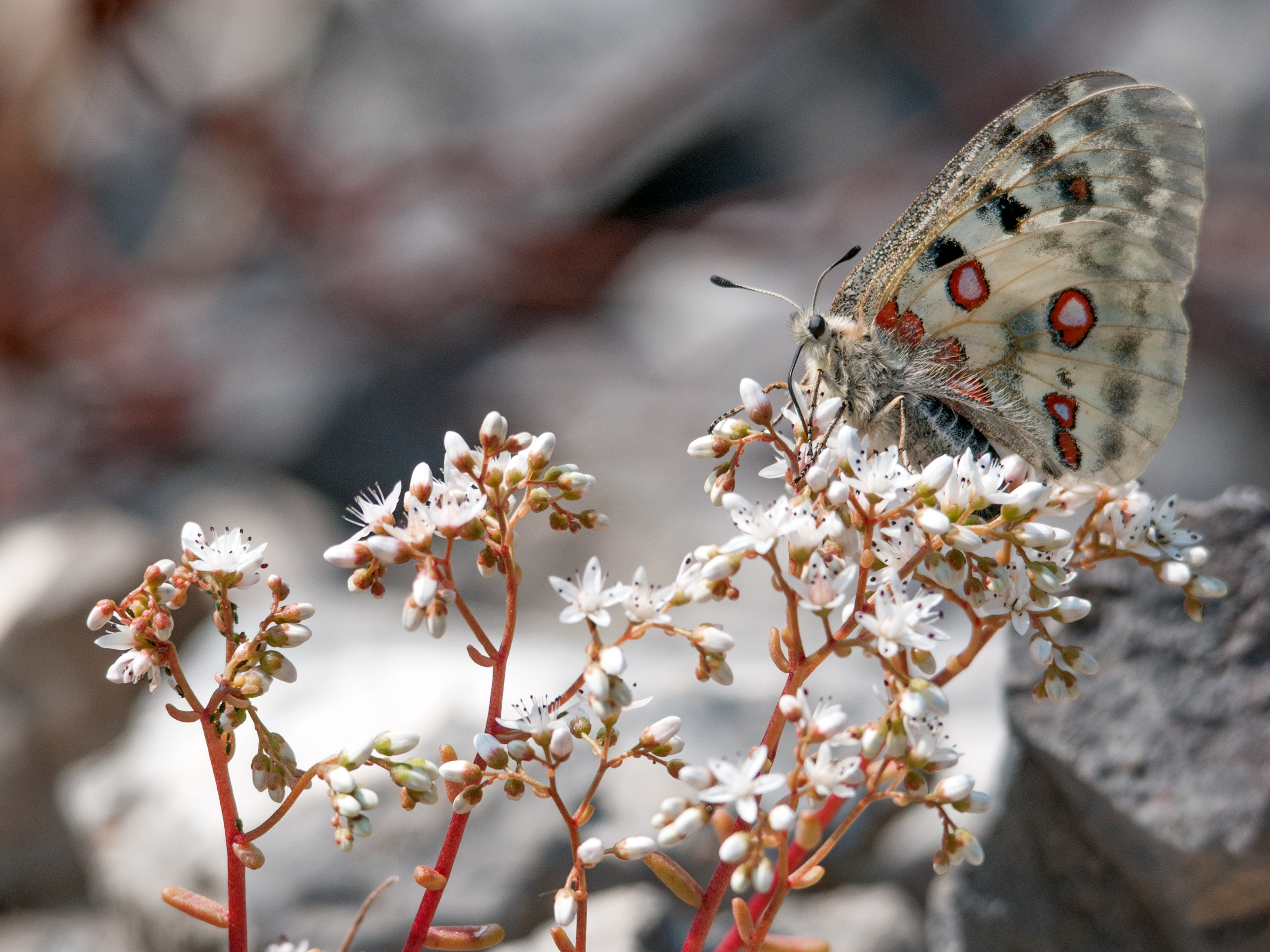Moselle Apollo - butterfly of the year 2024

Sun is its element
The Moselle Apollo butterfly (Parnassius apollo ssp. vinningensis) is a butterfly from the knight butterfly family and was chosen as Butterfly of the Year 2024 by the Arbeitsgemeinschaft Rheinisch-Westfälischer Lepidopterologen (butterfly experts), the Bund für Umwelt und Naturschutz Deutschland (BUND) and the BUND NRW Naturschutzstiftung. It is a highly endangered subspecies of the Apollo butterfly, which was already the animal of the year in Germany in 1995.
Its name is derived from Apollo, the Greek god of light, as the butterfly is almost only active when the sun is shining and can often be seen basking on stones with its wings open. It is also named after the wine village of Winningen in the lower Moselle valley, where it lives on the steep rocks and walls surrounded by vineyards, spatially and genetically isolated from other populations.

Poisonous with a chastity belt
The moth has a wingspan of 65-75 mm, making it one of the largest butterflies in Germany. Most of its wings are covered in white scales, with several large black spots on the forewings. There are two red eyespots (ocelli) with black edges and white mirrors on each of the hind wings, which serve as a warning that the butterflies are poisonous as a result of the caterpillars' food. The caterpillars of the butterfly feed mainly on succulent plants such as the white stonecrop (Sedum album). The moth's favorite plants include thistles, knapweeds and marjoram.
The Moselle Apollo butterfly can usually be observed from mid-May to the end of July. To find a mate, the males search for recently hatched females. As soon as it has discovered an unmated female, it is pursued and after a short courtship display, mating takes place. The male seals the end of the female's abdomen with a secretion, which then hardens. This seal acts like a chastity belt and prevents the female from being mated again by other males.

Helicopter use & scrub encroachment
The Moselle Apollo butterfly prefers dry, warm and rocky habitats, such as stony southern slopes and old vineyard walls, as large quantities of the white stonecrop still grow here. Unfortunately, the population of the butterfly has been declining massively since 2012, which is why it is a strictly protected butterfly species.
One reason for this is, for example, the ever-increasing scrub encroachment in the habitats due to the abandonment of agricultural use, which means that the weakly competitive food plants of the caterpillar and butterfly are being displaced by other species. Another reason for the decline could be the use of pesticides by helicopter on the steep slopes of the vineyards. The pesticides spread over a wide area in the landscape and could also affect the rocks where the Moselle Apollo butterflies and their caterpillars live.



